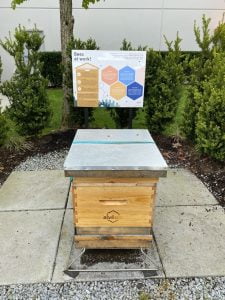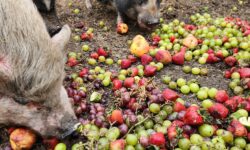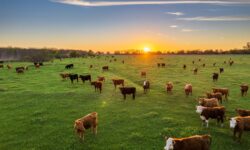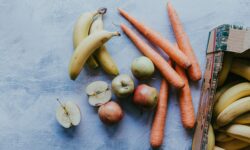With a mission to positively impact our world one bite at a time, exploring ways…
Our Urban Beehive
Did you know at our Vancouver warehouse we have our very own urban beehive? Our hive contains up to 50,000 bees producing 15kg of honey in a single year at the height of summer.
Benefits of urban beekeeping
- Help repurpose unused spaces in the city
- Provides an opportunity to educate citizens about the environment and the importance of pollination
- Produces delicious, hyper-local honey!
Why is pollination important?
Pollination is essential to most food production, making it a crucial part of our ecosystem! For flowers to produce fruit, parts of a ‘female’ flower must interact with parts of a ‘male’ flower. However, this does not happen on its own. It requires pollinators to carry pollen from the male flower and deposit it on the receptive surface of the female flower!
Bees are not the only pollinators! Hummingbirds, wasps, beetles, bats, moths, and butterflies also help pollination.
What happens in a beehive?
Approximately 90% of the bees in a hive are female. Over the course of their lives, they work to build the hive’s wax honeycombs, gather nectar, and transform it into honey! Male bees make up the other 10% of the hive. They don’t have stingers, instead, they have reproductive organs. Their key role in the hive is to fertilize the queen bee from a neighbouring hive to reproduce!
How is honey made?
Honey is produced with a plant and a flower collected by bees. Once they’ve brought it back to the hive, they add enzymes to the nectar before storing it in sealed honeycombs.






